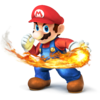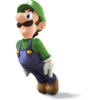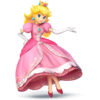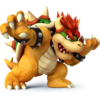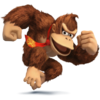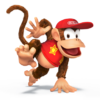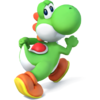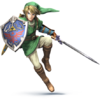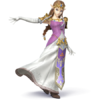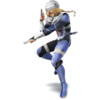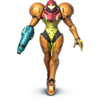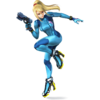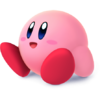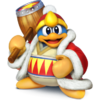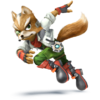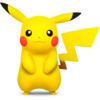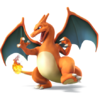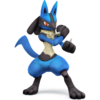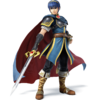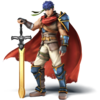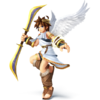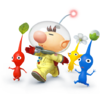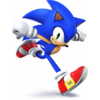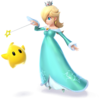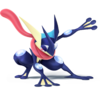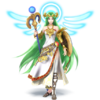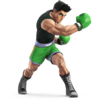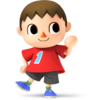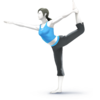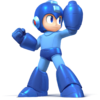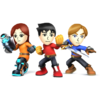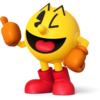Super Smash Bros. 4
| Super Smash Bros. for Wii U | |
|---|---|
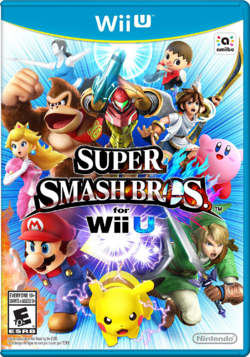 North American boxart. | |
| Developer(s) | Namco Bandai Sora Ltd. |
| Publisher(s) | Nintendo |
| Designer(s) | Masahiro Sakurai |
| Projected release date | Holiday 2014 |
| Genre(s) | Fighting |
| Mode(s) | Single player, Multiplayer, Online multiplayer |
| Ratings | PEGI: 12+ (provisional) |
Super Smash Bros. for Wii U is one of two games in the Super Smash Bros. series being released as part of the Super Smash Bros. 4 pair, and the home console counterpart to Super Smash Bros. for Nintendo 3DS. Although most gameplay elements are shared between the two versions, there are several elements which distinguish the two.
The game will be playable on the Wii U with a variety of controller options, including the Wii U GamePad, the Wii U Pro Controller, and, with a special adapter, the GameCube controller.
Confirmed content
The playable roster is the same between both versions of SSB4.
Characters
Multi-player stages
The two versions of SSB4 have separate sets of available stages; only a few stages appear in both the Wii U and 3DS versions. The Wii U version's stages are based more heavily on home console games. The following stages are available in the Wii U version:
Single-player modes
Multi-player modes
Features of the Wii U version
- The Wii U version will be compatible with a set of amiibo figurines utilizing the Wii U GamePad and near field communication (NFC). By using their respective figurine, players can give an AI character custom moves and level them up to level 50. The game is the first to utilize the GamePad's NFC function under the amiibo branding.
- The Wii U version lacks the optional black outlines around playable characters present in the 3DS version.
- In the Wii U version, most characters will always stand facing the screen regardless of which direction they face, with the intent of having them face the screen more often.
- This applies to movement and attack animations as well, often involving them mirroring their stance and attacks. Due to this, there is a possibility that some attacks may behave slightly differently when they interact with each other from different directions. For example, if such an "ambidextrous" character and another character that does not use this feature attack each other, the attacks may clang in a different location or even connect with the opponent differently depending on what direction the two characters are facing.
- Victory scenes seem to be a cross between Brawl and Melee. Like Melee, only the winner is shown in the main area, while the others are seen applauding in small windows on the screen. However, instead of a featureless black screen, the winner's area is an environment similar to that in Brawl's victory screen.
- The Wii U version will feature different collectible trophies than the 3DS version, with a greater focus on elements from home console games.
- The Wii U version will see the return of Brawl's My Music option, with a large selection of tracks available for each stage.
Gallery
| Super Smash Bros. series | |
|---|---|
| Super Smash Bros. · Super Smash Bros. Melee · Super Smash Bros. Brawl · Super Smash Bros. 4 (for Nintendo 3DS · for Wii U) · Super Smash Bros. Ultimate |

